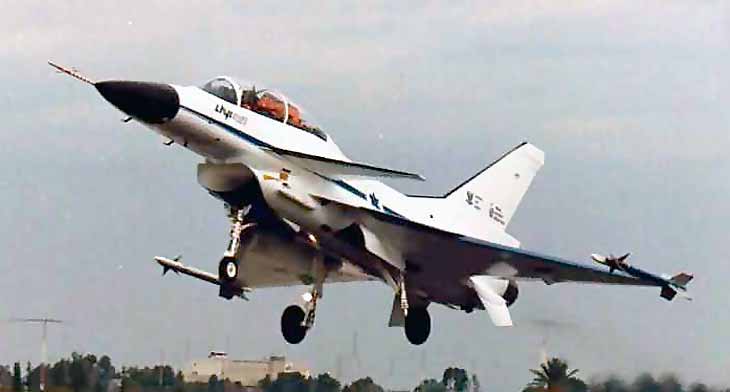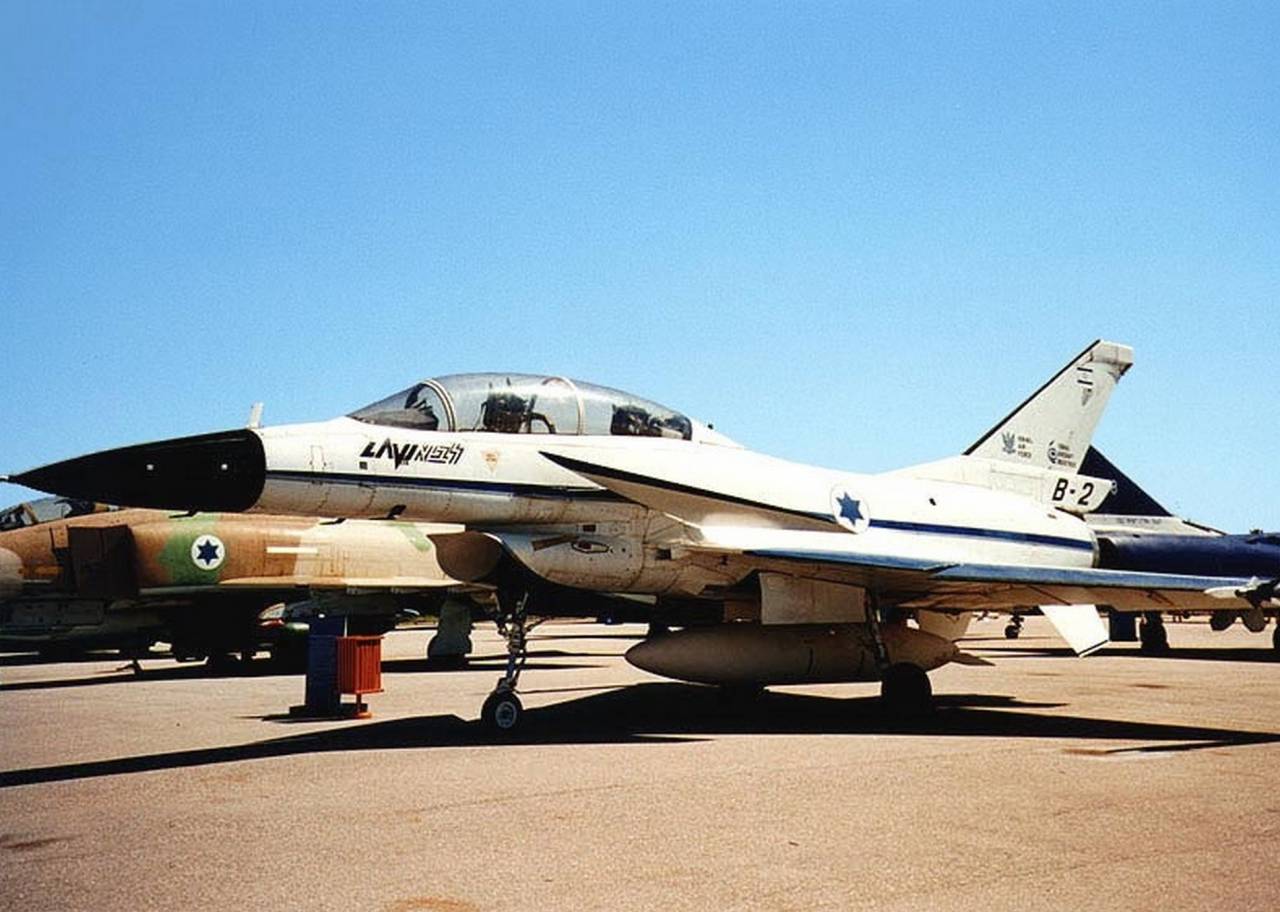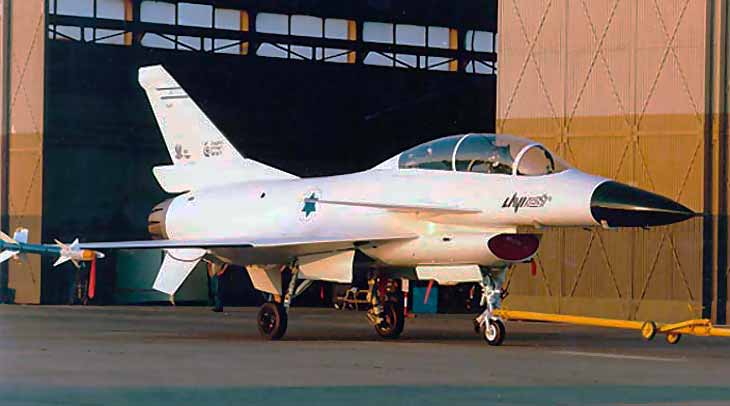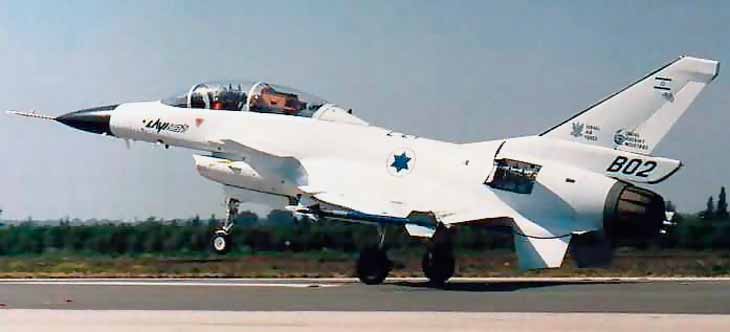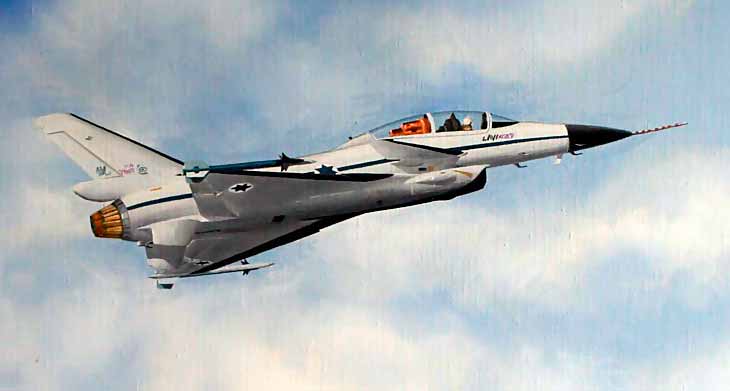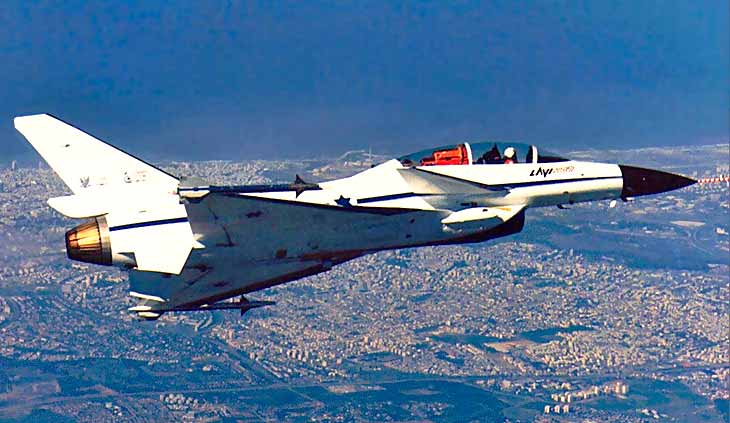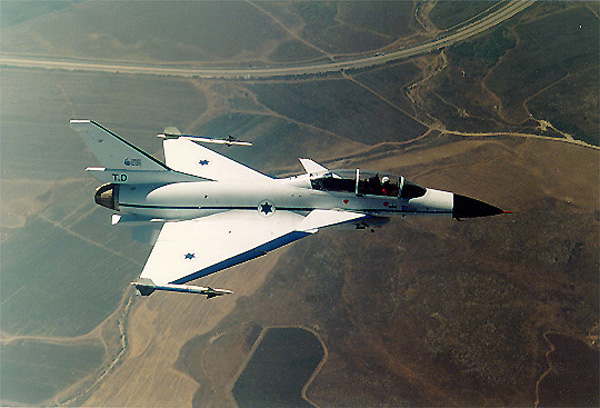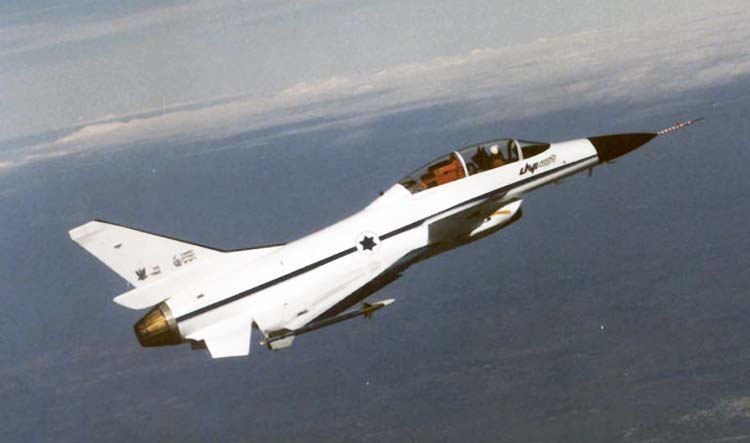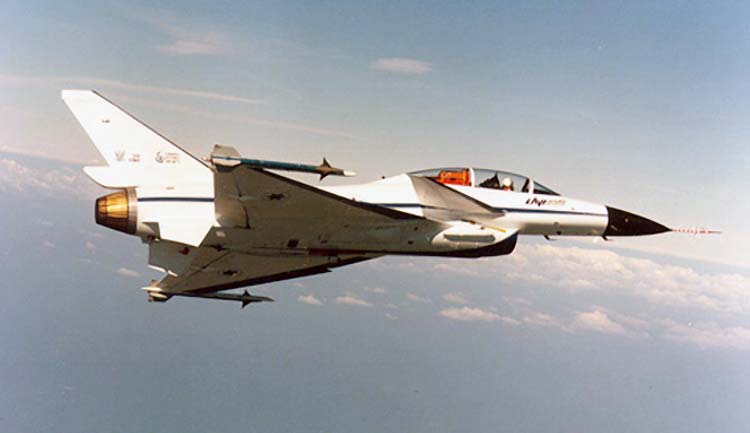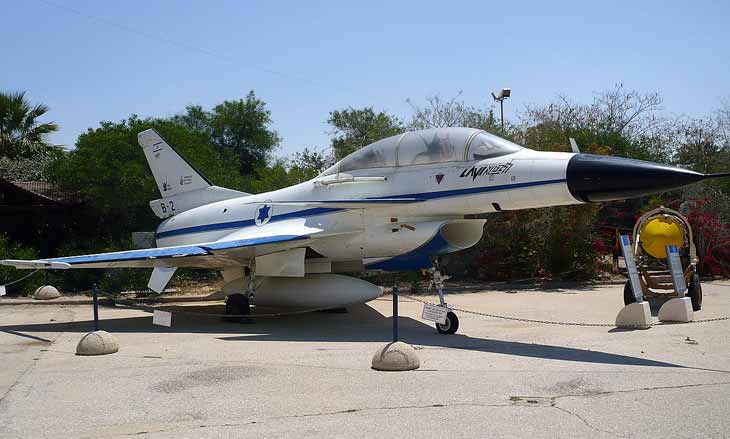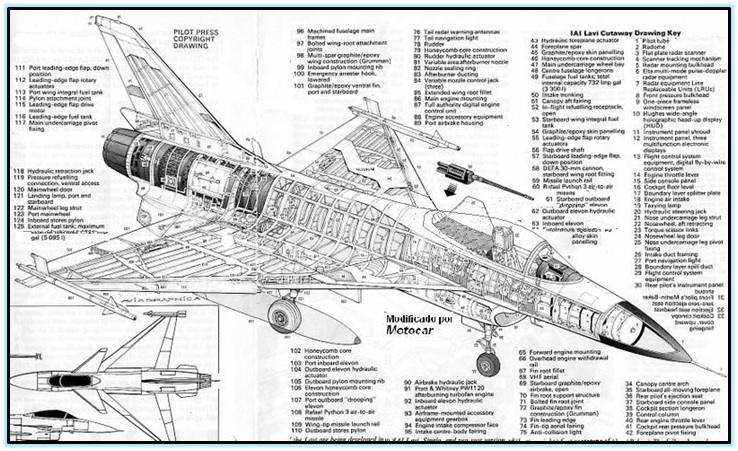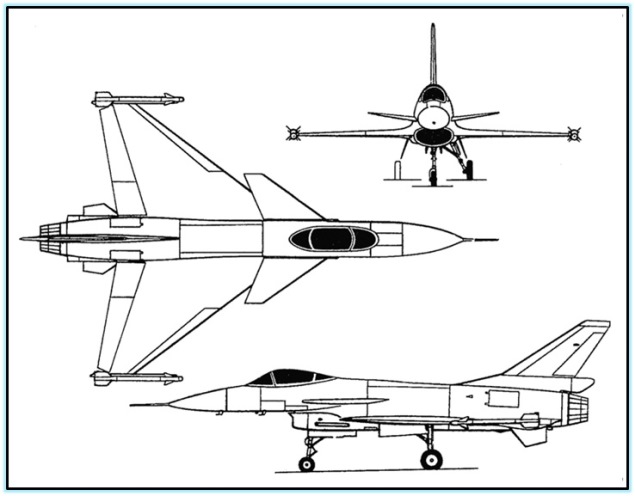The program to create the “Lavi” fighter (Hebr. — Young Lion) began in February 1980, when the Israeli government instructed the Israeli Air Force to develop technical specifications for the future fighter. The new aircraft was intended for strike operations (close air support and battlefield interdiction) with the capability to conduct air combat for self-defense. Research work began in October 1982. The American company Pratt & Whitney was chosen as the engine supplier.
The single-seat, single-engine “Lavi” aircraft was built according to the “canard” configuration with a triangular low-mounted wing. Composites were widely used in the design, their share reaching about 22% (by mass). The wing skin and non-load-bearing structural elements, fin, canards, control surfaces, and access panel covers were made of carbon fiber. Wing leading-edge sweep angle — 54°.
The aircraft has nine control surfaces: two all-moving canard surfaces, two leading-edge flaps on the outer wing panels, two inner and two outer elevons, and a rudder. The landing gear is tricycle type with single-wheel struts retracting into the fuselage. Landing gear track — 2.31 m, wheelbase — 3.86 m.
The flight control system is a digital fly-by-wire with four-channel redundancy and no backup mechanical linkage, developed by the American company Lear Astronics and the Israeli company MBT. The control stick is centrally located.
The pilot’s ejection seat (Martin-Baker Mk.10) has a slight recline (10°). A greater recline, as on the F-16 fighter, was rejected because Israeli pilots flying the F-16 experienced excessive tension in the shoulder and neck muscles.
The avionics suite was 60–70% composed of Israeli-designed components. Elta company designed the radar, ECM system, and communication equipment. The multimode pulse-Doppler radar EL/M-2032 (planned to be installed on the TD aircraft in 1991) was developed based on the EL/M-2021B radar designed in the 1970s. It was expected to be comparable in performance to the APG-68 radar used on F-16C aircraft and to have modes for target tracking in look-up/look-down, high-resolution ground mapping, terrain-avoidance using Doppler beam sharpening, and detection of surface targets. Maximum target detection range — 56 km.
The computing complex was a distributed system of 17 processors. The central onboard compact ACE-4 computer from Elbit weighed 54 kg, had a performance of up to 600,000 operations/s, and a large memory capacity (128 K), with a mean time between failures of 2,500 h. The computer was compatible with the data bus standard MIL-STD-1553B. An SMS-86 weapon management system was installed.
In 1991 it was planned to install a TINS 1700 INS from Tamam and a satellite navigation receiver. The aircraft’s cockpit was equipped with three multifunction displays on the instrument panel (one with a color CRT, two with monochrome CRTs) from Elbit and Astronautics, and a wide-angle diffractive HUD from Hughes. Elop developed a helmet-mounted display with a fiber-optic cable and a 30×30° field of view.
The research program was planned to be completed by 1990, followed by series production of the aircraft. A total of five fuselages were built, but only two prototypes were fully completed. On December 31, 1986, the prototype fighter made its first flight.
The United States, which assisted in the development of the “Lavi,” showed no willingness to provide significant financial support for its series production. Without such support, mass production was impossible due to the large financial investments required. As a result, in August 1987, after 82 test flights, the Israeli government decided to abandon the continuation of the “Lavi” program. Instead, Israel was given the opportunity to purchase an additional number of American F-16 fighters.
The story of the “Lavi” did not end there. Israel managed to complete a third (two-seat) prototype, which made its first flight on September 25, 1989, and since then has been used as a flying laboratory TD (Technology Demonstrator) for refining avionics and other advanced aircraft systems of Israeli design.
Flight and Technical Characteristics of “Lavi”:
Wingspan, m: 8.78;
Length, m: 14.57;
Aircraft height, m: 4.78;
Wing area, m²: 33.05;
Weight, kg: empty equipped — 9990, maximum takeoff — 19278;
Fuel, l: internal — 2625, external tanks — 4165;
Engine: 1 turbofan Pratt & Whitney PW1120;
Thrust, kN (kgf): dry — 1 × 55.6 (5670), with afterburner — 1 × 82.7 (8440);
Maximum flight speed, km/h: cruise near ground — 1106; at altitude 11,000 m — M=1.85;
Combat radius, km: 1855–2130;
Service ceiling, m: 18,000;
Max operational g-load: 9;
Crew, persons: 1;
Armament: one 30-mm cannon, combat load — 7260 kg on 11 hardpoints.
